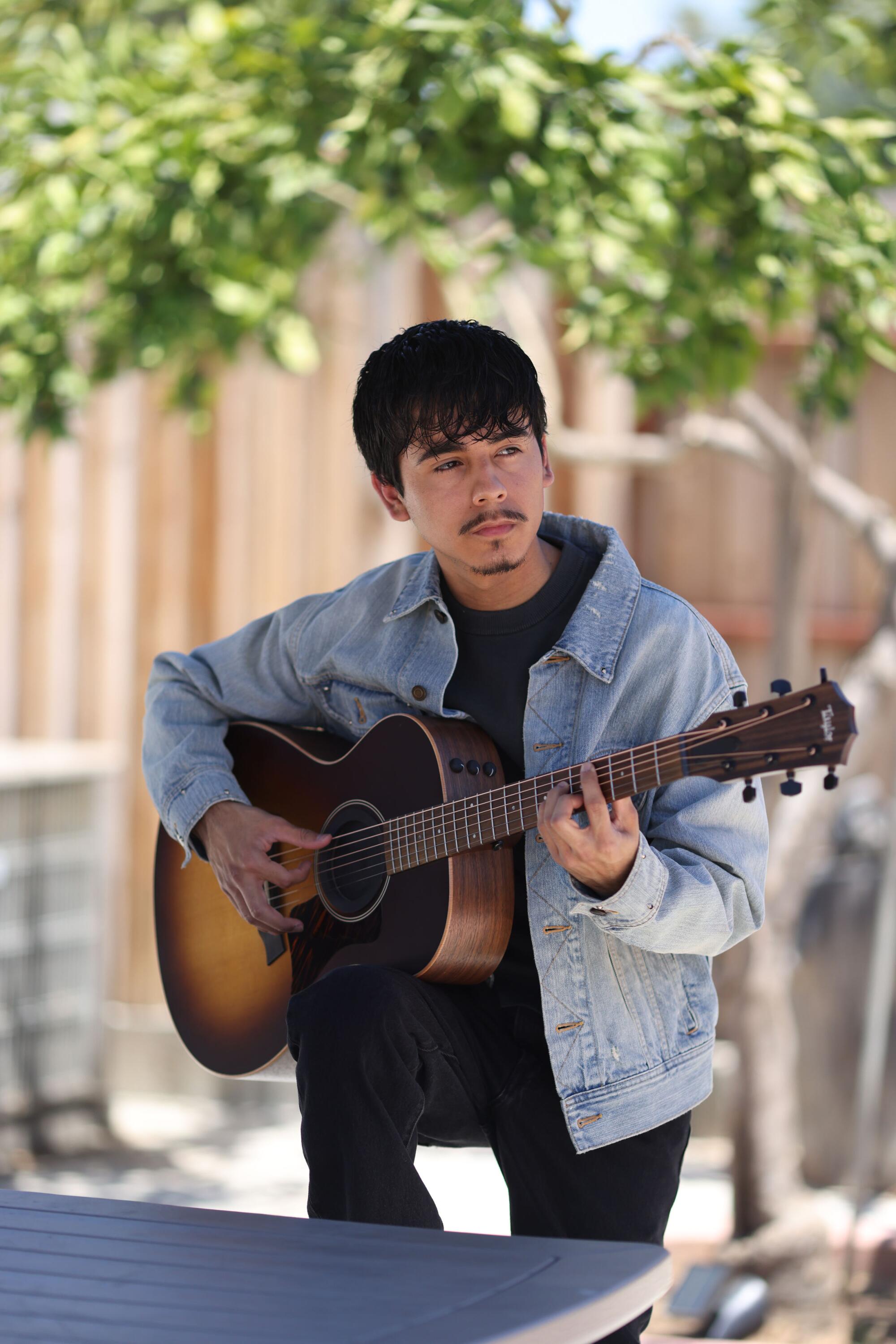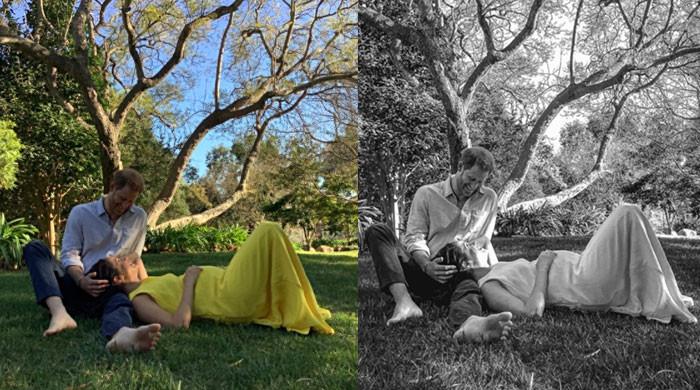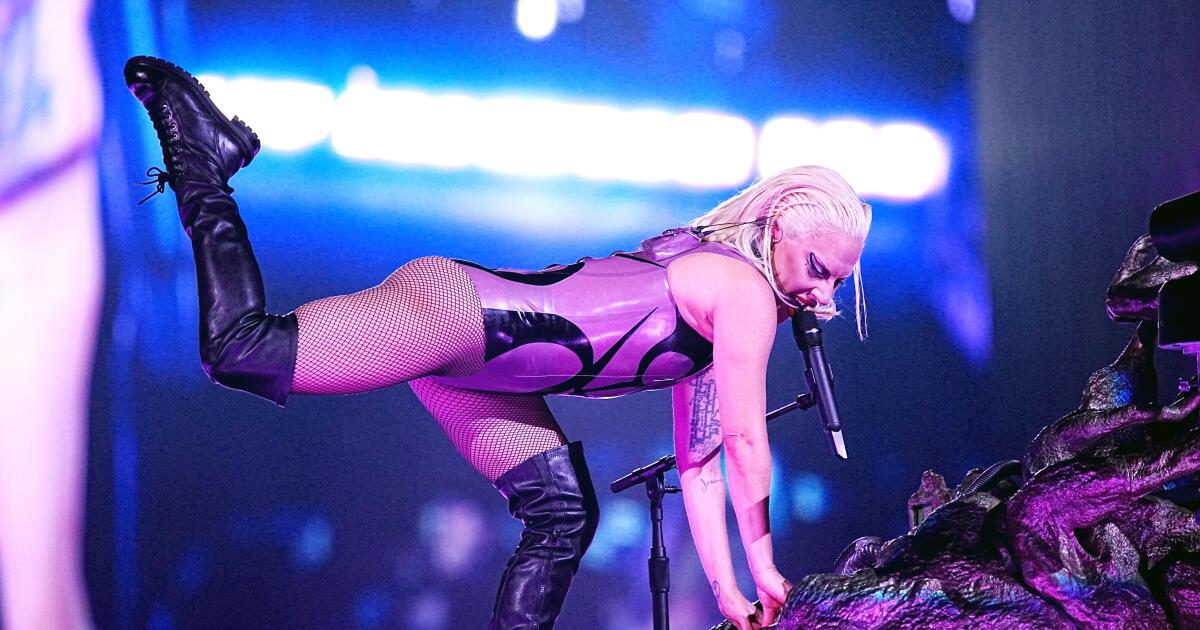Iván Cornejo knew from a very young age that he would find his future in music.
Precocious from childhood and self-taught, the American-born Mexican music star learned to play the guitar at age 8 by watching tutorials on YouTube. Soon, his hobby would become his vocation.
“I saw it with my own eyes. I thought, ‘This is what I want to do for the rest of my life.’ I had a huge heart in it,” Cornejo, 20, tells me as we sit in the living room of his parents’ Riverside home, just a few feet from the childhood bedroom where he says he had his epiphany. Save for a denim jacket, the Mexican-American singer-songwriter is dressed in black, an outfit worthy of the reigning prince of paisa sadness.
Cornejo began pursuing his dream in earnest as a teenager, building a sizable following on Instagram and TikTok with covers of Spanish-language love songs by artists like Eslabón Armado and Junior H, who signed record deals after being discovered online. In the comments section, followers complimented the budding musician on his guitar work and the haunting wail of his voice. Privately, he internalized those positive comments as he honed his songwriting skills.
At age 16, Cornejo dropped out of high school to focus on music full-time.
(Alejandro R. Jimenez./For Of The)
“It took them by surprise, for sure, but they quickly learned to accept it,” she said of her parents when she informed them of her decision. “They learned that music wasn’t just my hobby, that it wasn’t a hobby“And when they saw my passion for it, how much I really wanted to be an artist, they were speechless, but they were also very supportive.”
Cornejo's tactics would soon bear fruit.
In September 2021, she released “Alma Vacia,” an LP containing seven original tracks of anguish and longing backed by the highest tone requinto guitar, on the independent label Manzana Records. The debut album was a success thanks in large part to “Esta Dañada,” a song about falling in love with a girl who no longer believes in love. Fittingly, the song first blew up on TikTok; a snippet of its chorus (Her smile / her little face / her little hands / oh, what a delight) (Su sonrisa / su cara / sus manos / ay, qué delicia) became a trending topic on the app and was used as the soundtrack for more than a million videos. The virality of “Está Dañada” was enough for it to enter the Billboard Hot 100 (peaking at No. 61), becoming the second regional Mexican single to debut on the chart. Since then, more than 60 songs classified as regional Mexican have entered the chart, a testament to the genre’s rapid exponential growth in the United States.
The following year, just days before his 18th birthday, Cornejo proved he was more than a one-hit wonder with the release of “Dañado.” The second LP performed better than its predecessor, topping the Regional Mexican Albums chart and peaking at No. 28 on the Billboard Hot 200.
While other Mexican music artists have built massive audiences by singing about their bellicose escapades, Cornejo has made a name for himself by focusing on matters of the heart. It’s not uncharted territory: Mexican music history is littered with singer-songwriters like José Alfredo Jiménez and Cuco Sánchez, yearning balladeers whose catalogs are packed with songs about the million ways they’ve lost love. And while Cornejo may not have invented sad Mexican music, he’s certainly introducing it to a younger generation of Mexican-American listeners, making it relevant to an increasingly English-dominant subset of the Latino population who might easily choose to get their fill of teenage angst from someone like Olivia Rodrigo. In that sense, Cornejo is helping his fans connect with their heritage.
“I feel like Mexicans have always been romantic. I think the most romantic songs are in Spanish,” she says after I asked her why, as a bilingual and bicultural artist, she chose to record in Spanish rather than English. Her response reflects a popular sentiment among children of immigrants from Latin America, which holds that the language of our parents feels warmer, more personal and emotive than English, which can seem cold and transactional. That said, Cornejo hasn’t entirely ruled out the idea of singing in English: “I’ve recorded myself trying, but I don’t want to rush it,” she said.

(Alejandro R. Jimenez / For Of The)
That Mexican romanticism is present in “Mirada,” Cornejo’s latest album, which was released July 19 on Zaragoza Records and Interscope. The LP is his most ambitious project to date, offering the familiar kind of heartbreak fans have come to expect without repeating his previous work. To record the album, Cornejo enlisted the help of producer Frank Ríos and songwriters Arath Herce and Edgar Barrera, the latter of whom has written hits for artists such as Featherweight, Grupo Frontera, Maluma, Shakira and Madonna.
On “Mirada,” Cornejo seamlessly incorporates his indie rock and folk influences (Tom Odell, Jeff Buckley, Cigarettes After Sex, to name a few) with his patented sadness. mountaineer The end result is an album that sounds equally American and Mexican, raising the bar for what Mexican music can sound like.
“I want my songs to evolve throughout my musical history,” he said. “I want to do it in a way that fans won’t notice until I play one of my older songs. I want it to be a natural progression.”

This sonic fusion is most evident on the album’s title track, which begins with an isolated electric guitar melody reminiscent of early Radiohead before a Spanish guitar enters the mix. On “Quiero dormir cansado,” Cornejo takes the 1980s song popularized by Mexican pop singer Emmanuel and turns it into an ethereal cry for help.
So far, fans have welcomed “Mirada.” Earlier this week, the LP Made its debut on the Billboard 200ranking 17th.
Next month, Cornejo will take his distinctive Mexican-American sound on a 26-city U.S. tour that begins in the South, with stops in Nashville, Huntsville, Alabama, and Louisville, Kentucky — places that have seen their Latino populations explode in recent years.
“I am surprised! I never thought I would be able to perform regional Mexican music in these cities,” he said.












